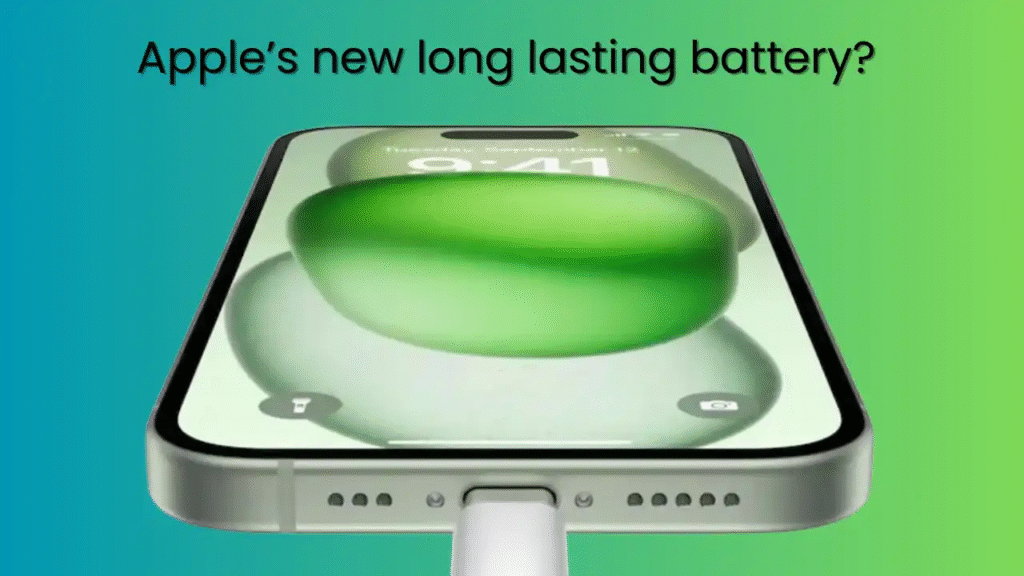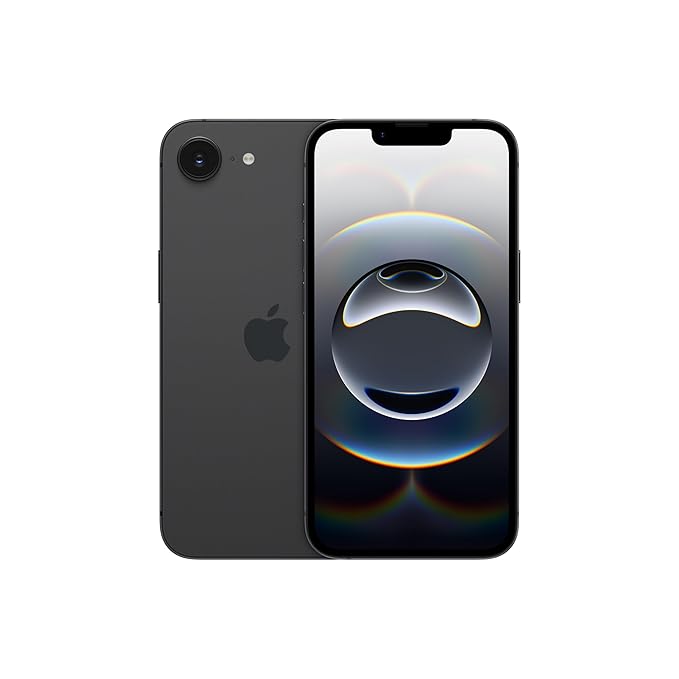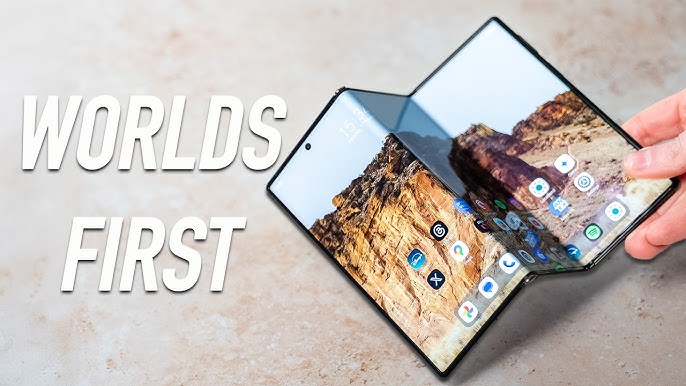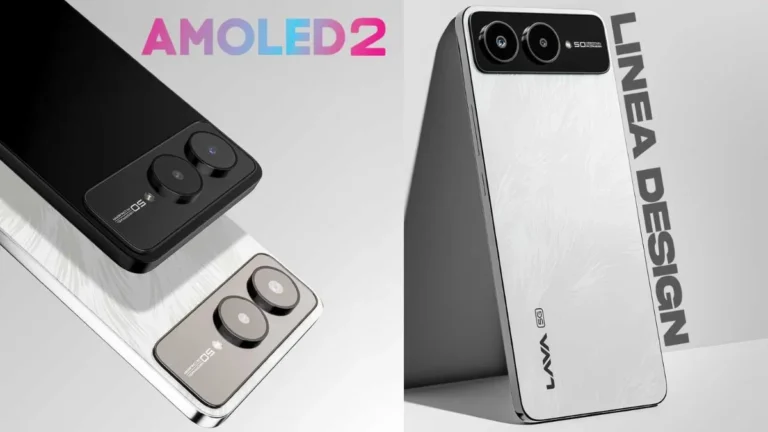
As anticipation builds around Apple’s next big release, all eyes are on the upcoming iPhone 17 series. This launch is expected to mark one of Apple’s most significant hardware overhauls in recent years, aligning with the company’s steady rhythm of releasing major iPhone upgrades every two to three years. The iPhone 17 is shaping up to be more than just a refinement—it’s being positioned as a next-generation leap in both design and functionality.
According to industry analysts and supply chain leaks, Apple is preparing to launch four models under the iPhone 17 lineup:
- iPhone 17 (Base Model) – Aimed at mainstream users with balanced performance.
- iPhone 17 Air – A new ultra-thin variant expected to replace the Plus model.
- iPhone 17 Pro – Focused on professionals with premium materials and cameras.
- iPhone 17 Pro Max – The top-tier model with the largest display and most powerful specs.
The iPhone 17 Air, in particular, is generating buzz for its expected super-slim profile (~5.5mm), potentially making it the thinnest iPhone ever released. The entire range is also rumored to feature notable design shifts, like a new camera layout and lighter materials, setting the stage for a fresh visual identity.
Apple has maintained a consistent September release cycle, and the iPhone 17 series is expected to follow suit. Most reports peg the official launch event between September 9–12, 2025, with pre-orders likely to begin shortly after and global availability rolling out in phases.
This next iPhone lineup will not only be crucial from a design standpoint but also strategically important, as Apple continues to push forward its in-house silicon, AI-powered software (via iOS 26), and next-gen display technology. With all signs pointing to a September reveal, the iPhone 17 is already positioned to be one of the most anticipated smartphones of the year.
iPhone 17 Display: Bigger Screens for All Models
One of the standout upgrades in the upcoming iPhone 17 lineup is the significant shift in screen sizes. Apple appears to be responding to consumer demand for more immersive displays, and the result is a carefully redesigned screen strategy across the entire series.
Leaked CAD renders and insider reports suggest the following new display dimensions:
- iPhone 17 (Base Model): Approximately 6.3 inches, a modest increase from the iPhone 15/16’s 6.1-inch standard size.
- iPhone 17 Air: Expected to feature a larger 6.6-inch display while maintaining an ultra-thin chassis, marking a first for Apple in combining compact design with extended screen real estate.
- iPhone 17 Pro Max: Will reportedly boast a massive 6.9-inch panel, the biggest ever on an iPhone—ideal for power users and content creators.
The iPhone 17 series is also expected to democratize Apple’s ProMotion technology. Previously limited to Pro models, 120Hz refresh rate displays may now extend to the Air and possibly even the base model. This enhancement ensures smoother scrolling, better responsiveness, and an overall richer user experience—particularly beneficial for gaming and high-frame-rate video playback.
In addition to size and refresh rate improvements, Apple is reportedly pushing the limits of display brightness. Industry insiders indicate that the iPhone 17 Pro and Pro Max models could feature peak brightness levels exceeding 2,500 nits, making them more visible under direct sunlight and improving HDR content display.
Durability will also get a boost. Apple is rumored to be introducing new anti-reflective coatings and tougher glass formulations to reduce glare and increase scratch resistance. These enhancements are not just cosmetic—they represent Apple’s ongoing commitment to balancing cutting-edge design with real-world usability.
Taken together, these upgrades suggest that the iPhone 17 will offer Apple’s most advanced display experience yet. Whether you’re streaming, gaming, or just browsing, the new screen sizes and technology upgrades promise to make a noticeable difference.
iPhone 17 Design: Slimmer, Sleeker, Stronger

The design of the iPhone 17 is shaping up to be one of the most visually distinct updates Apple has introduced in years. Across the lineup, subtle refinements and bold structural changes signal Apple’s intent to deliver not just better performance—but a more refined and forward-looking design language.
The most headline-worthy development is the introduction of the iPhone 17 Air, which is rumored to be an ultra-thin device measuring just ~5.5 mm. If true, this would make it the thinnest iPhone ever created, and possibly the thinnest mainstream smartphone on the market. Despite its slim profile, the Air is still expected to house a larger 6.6-inch screen and a powerful battery—thanks to innovations in internal layout and thermal efficiency.
Meanwhile, the iPhone 17 Pro and Pro Max are reportedly undergoing a material shift, moving from titanium back to aluminum frames. This change, while seemingly regressive, could actually make the devices lighter and better at dissipating heat. Aluminum also allows for smoother finishes and could lead to more vibrant color options, adding a fresh aesthetic twist to Apple’s high-end phones.
Another bold step in Apple’s design evolution is the new horizontal rear camera layout. Unlike the vertical or square modules of previous generations, the iPhone 17 series may align its camera sensors in a single horizontal bar. This not only distinguishes the iPhone 17 visually from its predecessors, but also allows for more balanced internal component placement, aiding in thermal management and possibly better stabilization.
In line with Apple’s minimalist design philosophy, the company is said to be experimenting with relocating the Apple logo inside the MagSafe ring on the back panel. This minor yet impactful change helps center the visual focus and potentially doubles as a precision alignment guide for MagSafe accessories.
Altogether, the iPhone 17 represents a harmonious blend of bold innovation and elegant refinement. From the ultra-slim Air to the reengineered Pro models, Apple is clearly aiming to redefine what a premium smartphone should feel and look like in 2025.
Also Read: Are Noise Buds F1 the Best TWS Under ₹1,200?
iPhone 17 Camera: Major Front & Rear Upgrades
With the iPhone 17, Apple is expected to take a major leap in camera technology—making photography and videography more powerful across the entire lineup. Leaks and analyst reports suggest that Apple is standardizing high-resolution sensors while also introducing AI-driven video enhancements that could rival even professional equipment.
Across the board, most iPhone 17 models are expected to feature 48MP rear cameras—a significant upgrade for the base and Air variants, which previously relied on 12MP or 24MP sensors. This aligns Apple with the broader smartphone market trend of adopting high-resolution sensors for sharper images, better low-light performance, and improved zoom capabilities.
The iPhone 17 Pro and Pro Max models will reportedly sport triple-lens camera systems, consisting of:
- A 48MP wide main sensor
- A 48MP ultra-wide lens
- A dedicated telephoto or periscope lens (especially for the Pro Max)
These enhancements are designed to elevate professional-grade mobile photography, offering users advanced optical zoom, greater dynamic range, and improved Night Mode performance.
On the front, Apple is said to be revamping the selfie experience with a new 24MP wide-angle front-facing camera. This upgrade will dramatically boost detail in selfies, enable higher-quality FaceTime calls, and support better edge detection in Portrait Mode. It’s also a response to the rising popularity of front camera use for vlogging, livestreaming, and video calls.
Video capabilities are expected to reach a new peak with the iPhone 17 lineup. Key features in development include:
- 8K video recording for ultra-high-definition content
- AI-powered cinematic tools for real-time depth control, subject tracking, and lighting adjustments
- Enhanced stabilization to reduce shake during handheld shots
These tools may also be supported by hardware improvements like better gyroscopes and AI cores integrated in the A19 chip.
With these upgrades, the iPhone 17 series is positioned to become Apple’s most camera-forward release yet—making professional-quality content creation accessible to everyday users. Whether you’re capturing landscapes, recording cinematic videos, or just snapping selfies, the iPhone 17 will likely deliver a photography experience that’s smarter, sharper, and more versatile than ever before.
Also Read: Apple MacBook Pro M5 Coming; 15 Macs in Pipeline
iPhone 17 Software: What to Expect from iOS 26
Alongside its hardware upgrades, the iPhone 17 will debut with iOS 26, a major software update expected to deliver an intelligent and more intuitive user experience. Apple is betting big on AI, system-level personalization, and performance efficiency—making iOS 26 not just a new version, but a pivotal evolution of the operating system.
A major highlight of iOS 26 is its AI-driven feature set. With Apple now focused on integrating on-device intelligence, the iPhone 17 is rumored to support several new capabilities powered by machine learning:
- Smarter calls: Automatic call summaries, real-time voice filters, and live voicemail previews.
- Live translation: Multi-language translation during phone calls and FaceTime, ideal for global users and travelers.
- Contextual suggestions: Smarter Siri and app-based recommendations based on usage patterns, time of day, and even location.
iOS 26 will also introduce a brand-new design language called Liquid Glass UI, which is set to deliver smoother transitions, glossier textures, and more fluid animations. Apple aims to enhance the visual responsiveness of the interface, making even routine tasks feel more immersive and dynamic. Combined with the 120Hz ProMotion displays in the iPhone 17, this UI overhaul will offer a visually stunning experience.
Another major software innovation coming with iOS 26 is Adaptive Power Mode. This new feature intelligently learns your daily usage habits and optimizes performance and battery usage accordingly. For example, during periods of low activity, background processes and refresh rates may be lowered to preserve power—while ramping up when the device senses high-demand tasks like gaming or video editing.
Importantly, these upgrades will be deeply integrated into the iPhone 17 hardware, particularly the A19 chipset, which will feature a next-generation Neural Engine optimized for real-time AI tasks. Unlike cloud-reliant models, Apple is focusing on privacy-preserving, on-device AI, ensuring speed and data security.
Altogether, iOS 26 isn’t just a typical update—it represents a strategic leap toward smarter, more personalized, and efficient mobile computing. When paired with the hardware innovations of the iPhone 17, users can expect a seamless blend of power and polish that sets a new benchmark for mobile operating systems.
iPhone 17 Performance: A19 Chips and Better Cooling
At the heart of the iPhone 17 series lies one of its most exciting upgrades: Apple’s next-generation silicon. The lineup will introduce not one but two new chipsets—A19 and A19 Pro—engineered to deliver exceptional performance, efficiency, and AI processing across different user needs.
According to supply chain reports and insider leaks, the iPhone 17 base and Air models will be powered by the A19 chip, while the Pro and Pro Max variants will feature the more powerful A19 Pro. Both chips are expected to be built on an enhanced 3nm (possibly 2nm) process, allowing for improved transistor density, better thermal management, and significantly lower power consumption.
The performance gains aren’t just theoretical. Apple is reportedly targeting a 20–25% boost in CPU performance, a 30–35% jump in GPU power, and a dramatic 40%+ increase in Neural Engine performance over the A17 Pro found in current models. This means the iPhone 17 will be noticeably faster in gaming, multitasking, and especially AI-heavy tasks like real-time language translation, photo editing, and voice recognition.
To support these performance gains without overheating, Apple is introducing a vapor chamber cooling system for the first time in an iPhone. Previously seen in high-end Android flagships, this cooling method uses liquid evaporation and condensation to rapidly dissipate heat, keeping the device cooler during prolonged high-performance usage such as 4K video editing or intense gaming sessions.
Memory is also getting a big upgrade. The iPhone 17 Pro Max is rumored to pack up to 12GB of RAM, the highest ever in an iPhone. This not only enables better background task management but also improves app launch times, AI responsiveness, and pro workflows like editing RAW photos or 8K videos on-device. Meanwhile, the Pro and Air models are likely to feature 8GB RAM, offering a solid balance of speed and efficiency.
When all these elements—advanced chipsets, smarter software, cooling tech, and expanded memory—come together, the iPhone 17 becomes more than a smartphone. It becomes a mobile computing powerhouse designed for the modern user who demands speed, intelligence, and reliability.
Also Read: Nothing OS 4.0 on Android 16 Coming This Autumn
iPhone 17 Battery and Charging: Faster and Smarter

The iPhone 17 is expected to bring significant improvements in battery performance—not just in capacity, but in how power is managed, delivered, and preserved throughout the day. Apple appears to be targeting both speed and efficiency with a combination of hardware and software advancements.
One of the most anticipated upgrades is the support for Qi 2.2 wireless fast charging, with speeds reaching up to 25W. This will mark a meaningful step forward from the 15W cap in current MagSafe systems. For users, this means shorter wireless charging times and less reliance on cables, without compromising safety or battery health.
For those who still prefer a wired connection, the iPhone 17 is rumored to support up to 35W fast charging via USB-C. This would make it the fastest-charging iPhone ever and significantly reduce the time it takes to go from 0% to 100%. Combined with intelligent battery management in iOS 26, users can expect smoother and more efficient power delivery during charging cycles.
Beyond charging speeds, Apple is reportedly investing in new battery chemistry, including silicon-carbon anode technology, which offers higher energy density and longer lifespan compared to traditional lithium-ion cells. Additionally, the iPhone 17 may introduce an upgraded thermal adhesive compound that improves heat dissipation and keeps battery temperatures in check—especially during intensive tasks or prolonged charging sessions.
But Apple isn’t relying on hardware alone. The iPhone 17, powered by the A19 and A19 Pro chips, will leverage software-driven efficiency improvements, thanks to iOS 26’s Adaptive Power Mode. This feature adjusts power consumption dynamically based on user behavior, background activity, and app usage—ensuring every watt is used wisely.
Altogether, these innovations make the iPhone 17 not just faster to charge but smarter in how it uses and preserves power. Whether you’re a casual user or a power user juggling multiple tasks, the iPhone 17 promises all-day performance with smarter energy optimization than ever before.
iPhone 17 Connectivity: Wi-Fi 7 and Apple’s Own 5G Modem
With the iPhone 17, Apple is set to make major strides in wireless connectivity by moving more components in-house and adopting next-generation standards. This shift not only boosts performance but also reinforces Apple’s long-term goal of tightly integrating hardware and software for unmatched user experience.
One of the most exciting changes is the expected debut of Apple’s own Wi-Fi 7 chip, replacing third-party solutions from Broadcom. Wi-Fi 7—officially known as IEEE 802.11be—offers up to 4.8x faster data transfer speeds compared to Wi-Fi 6, lower latency, and better multi-device performance. For users, this means seamless 4K/8K streaming, faster downloads, and lag-free cloud gaming—even in crowded network environments.
But Apple isn’t stopping at Wi-Fi. The company is also poised to unveil its first custom-built 5G modem, which could debut in select iPhone 17 models. Apple has been working on bringing modem development in-house since acquiring Intel’s smartphone modem business in 2019, and the iPhone 17 Air or base model could be the first to showcase this technology. Benefits include:
- Lower power consumption
- Better thermal management
- Reduced reliance on Qualcomm
- Full control over modem-software integration
While not all models may carry Apple’s modem this year, its arrival would be a pivotal moment in the iPhone’s evolution—bringing tighter ecosystem control and potentially better connectivity optimization over time.
Additionally, the iPhone 17 Air is expected to launch as an eSIM-only model in select regions, including the U.S. and parts of Europe. Apple previously removed the physical SIM tray in U.S. variants of the iPhone 14, and it looks like this move may now expand to more models and markets. The eSIM-only approach enables:
- A thinner device profile
- Improved water and dust resistance
- Easier carrier switching for international travelers
These connectivity upgrades position the iPhone 17 as not just faster but also smarter and more future-ready. Whether it’s streaming, gaming, or global travel, users can expect a more seamless and reliable wireless experience backed by Apple’s own silicon.
Also Read: Lumio Arc 5 and Arc 7 Projectors with Google TV Set to Launch in India on July 7
iPhone 17 Colors & Finishes: Fresh Looks
The iPhone 17 lineup won’t just be about what’s inside—Apple is also shaking things up with a bold and refreshing design palette. This year’s models are expected to feature new color options and premium materials, helping each variant stand out more than ever.
According to early leaks from supply chain sources, the iPhone 17 will introduce several new colorways, including:
- Light Blue – a soft, pastel-inspired shade that offers a fresh and modern feel
- Copper – a rich, metallic tone aimed at professionals and trend-conscious users
- Mint Green – a clean, vibrant option with youthful energy
- Matte Black & Pearl White – likely to remain as staple classics for minimalist users
These shades won’t be mere paint jobs. Apple is reportedly incorporating dual-tone glass finishes, where the back panel subtly shifts tones depending on lighting and angle. Additionally, matte textures will be used on the Pro and Pro Max models to minimize fingerprints while delivering a more tactile, premium feel.
Each model tier within the iPhone 17 series will also be visually distinctive. The Air may feature a glossier finish with a centered logo inside the MagSafe ring, while the Pro models will retain a more industrial look with brushed aluminum frames and sharper edges. This approach not only adds variety but also helps consumers easily identify their device tier by look and feel alone.
With these aesthetic refinements, Apple is aiming to offer a phone that doesn’t just perform at a high level—but also matches your style. The iPhone 17 is set to be one of the most personalized and visually refined iPhones to date, combining elegance with engineering in every detail.
iPhone 17 Pricing & Availability
With all the powerful upgrades coming to the iPhone 17 series—ranging from larger displays and smarter cameras to faster chips and AI-driven software—many are wondering how pricing will be impacted. Based on early analyst estimates and Apple’s pricing history, we can expect a familiar tiered strategy with slight increases to reflect the cutting-edge hardware and design changes.
The iPhone 17 base model is expected to be priced at approximately ₹79,900 in India (or $799 in the U.S.). It will likely maintain its position as the mainstream flagship, offering a balanced combination of performance, display, and value for general users.
The new iPhone 17 Air, which replaces the Plus variant, is rumored to start at around $899 globally—likely landing in the ₹85,000–₹90,000 range in India. Despite its thin design, the Air is expected to pack strong features, making it ideal for users who want style without compromising on screen size or capability.
Meanwhile, the iPhone 17 Pro and Pro Max are anticipated to cross the ₹1.45 lakh (roughly $1,299+) mark, especially in higher storage configurations. These models will cater to power users, professionals, and creators who need top-tier camera hardware, larger displays, and enhanced performance.
As for availability, Apple is expected to stick to its traditional mid-September launch window. Multiple reports suggest the iPhone 17 will be announced between September 9–12, 2025, with pre-orders opening shortly after and shipments beginning within 7–10 days. A global rollout will follow, with markets like the U.S., UK, and India among the first to receive the devices.
In summary, the iPhone 17 lineup will cater to a wide spectrum of users—from casual upgraders to tech enthusiasts—offering refined choices at various price points. With its blend of new design, smarter software, and next-gen performance, it’s shaping up to be Apple’s most well-rounded iPhone release yet.
iPhone 16e 128 GB: Built for Apple Intelligence, A18 Chip, Supersized Battery Life, 48MP Fusion. Camera, 15.40 cm (6.1″) Super Retina XDR Display; Black

The iPhone 16e 128 GB in Black packs power and performance with the new A18 chip, optimized for Apple Intelligence. Enjoy stunning visuals on its 6.1″ Super Retina XDR display, a sharp 48MP Fusion Camera, and a supersized battery designed to keep up all day.
Conclusion: Should You Wait for the iPhone 17?
With a wave of meaningful upgrades across display, performance, camera, and software, the iPhone 17 stands out as one of Apple’s most transformative smartphone releases in recent memory. From its larger and brighter screens to AI-powered iOS 26 features and powerful A19 chipsets, the iPhone 17 isn’t just a routine refresh—it’s a bold step into Apple’s next chapter of mobile innovation.
For users still holding on to older models like the iPhone 13 or below, this release presents a compelling upgrade opportunity. The advancements in speed, photography, battery life, and user experience will be instantly noticeable, especially with improvements like a 48MP main camera, smarter on-device AI, and significantly faster charging.
Apple’s strategy with the iPhone 17 is clear: deliver lighter designs, more intelligent software, and bigger hardware leaps without losing the reliability and polish the brand is known for. Whether you’re drawn to the ultra-thin iPhone 17 Air, the powerhouse Pro Max, or the more accessible base model, this lineup caters to a wide range of users without compromise.
In short, if you’re looking for a phone that feels both futuristic and refined, the iPhone 17 could be the upgrade that finally feels worth it.


